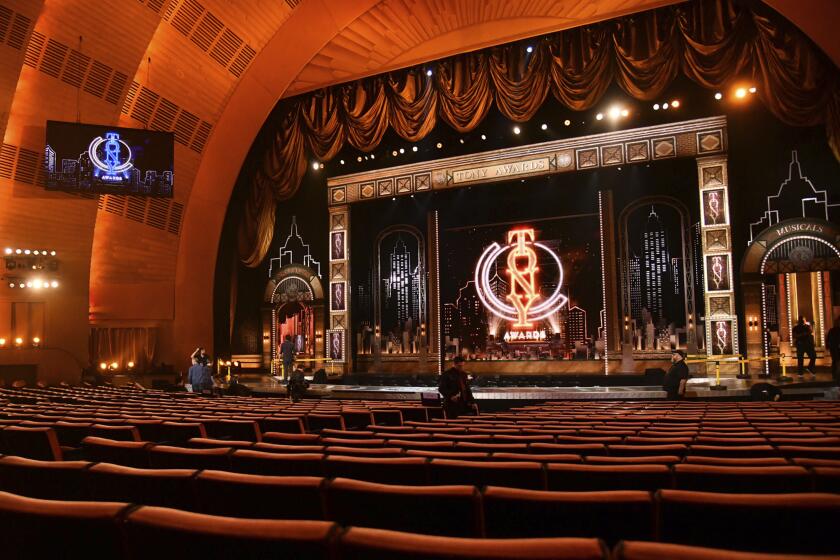ART REVIEW : A Slapdash Salute to Falkenstein
- Share via
Intrigued by the theories of contemporary physics, Claire Falkenstein has spent decades translating an expanding, accelerating universe into two and three dimensions. A sampling of her maquettes, paintings, drawings and jewelry from the last 30-odd years at the Laband Art Gallery, Loyola Marymount University (to April 9) is a rather slapdash “tribute” to an uncommon artist.
The maquettes--which are sometimes minus dates and positioned confusingly next to photo blow-ups of other projects--demonstrate Falkenstein’s airy, perpetual-motion style.
In “U as a Set,” for a site in Long Beach, a colony of Lilliputian copper arcs clamber all over a ball of larger copper curves with flattened ends to form a wiggling spherical mass. Models for two stained-glass windows for St. Basil’s in Los Angeles are made of complex layers of colors. The brochure essay explains how Falkenstein manipulated the intensity of entering light to create a climax of heat at the altar.
In “Orbiting the Earth,” a massive painting from 1963 (the year after John Glenn’s Mercury-Atlas 6 mission), the artist envisions space as a paisley pattern of copper, gold and aluminum. Meteoric “flaming” patches of gold edged with crackling spits of black, black arcs like the edges of a solar eclipse and a silver torus also populate this dense and mysterious realm. The nine panels of the painting also pull apart in lax discord--surely due to careless installation.
In recent paintings of equine themes, spare dry line creates the active imagery and a screen of squarish strokes of color drums up a rhythmic counterpoint. In “The Battle of Little Big Horn,” horses and riders explode in a crescendo of heads, hoofs and legs that retain the essential breathing-space tempering Falkenstein’s kinetic compositions. On occasion, however, her interest in peak moments of action becomes the stuff of simple-minded cartoons. In “Rodeo,” the cause-and-effect relationship of movements of a horse and rider is too cloyingly anecdotal.
Recent felt-pen drawings of battling wrestlers continue Falkenstein’s preoccupation with action and reaction. Oddly enough, there is little sense of physical weight; the men are airy outlines fixed in stylized aggressive or defensive postures. A few of the drawings are crumpled, seemingly in hopes of adding a sculptural density.
The jewelry--chunks of Venetian glass or a sliver of a geode hung on open circles of beaten silver--shares the earth-woman look of much counterculture ornament. Space allotted to these designs might have been better used to give the viewer an idea of the development of Falkenstein’s major sculptural work. Context is sorely lacking here. Even the brochure is innocent of such basic information as the artist’s artistic influences and training and the date of her birth (1908).
More to Read
The biggest entertainment stories
Get our big stories about Hollywood, film, television, music, arts, culture and more right in your inbox as soon as they publish.
You may occasionally receive promotional content from the Los Angeles Times.










